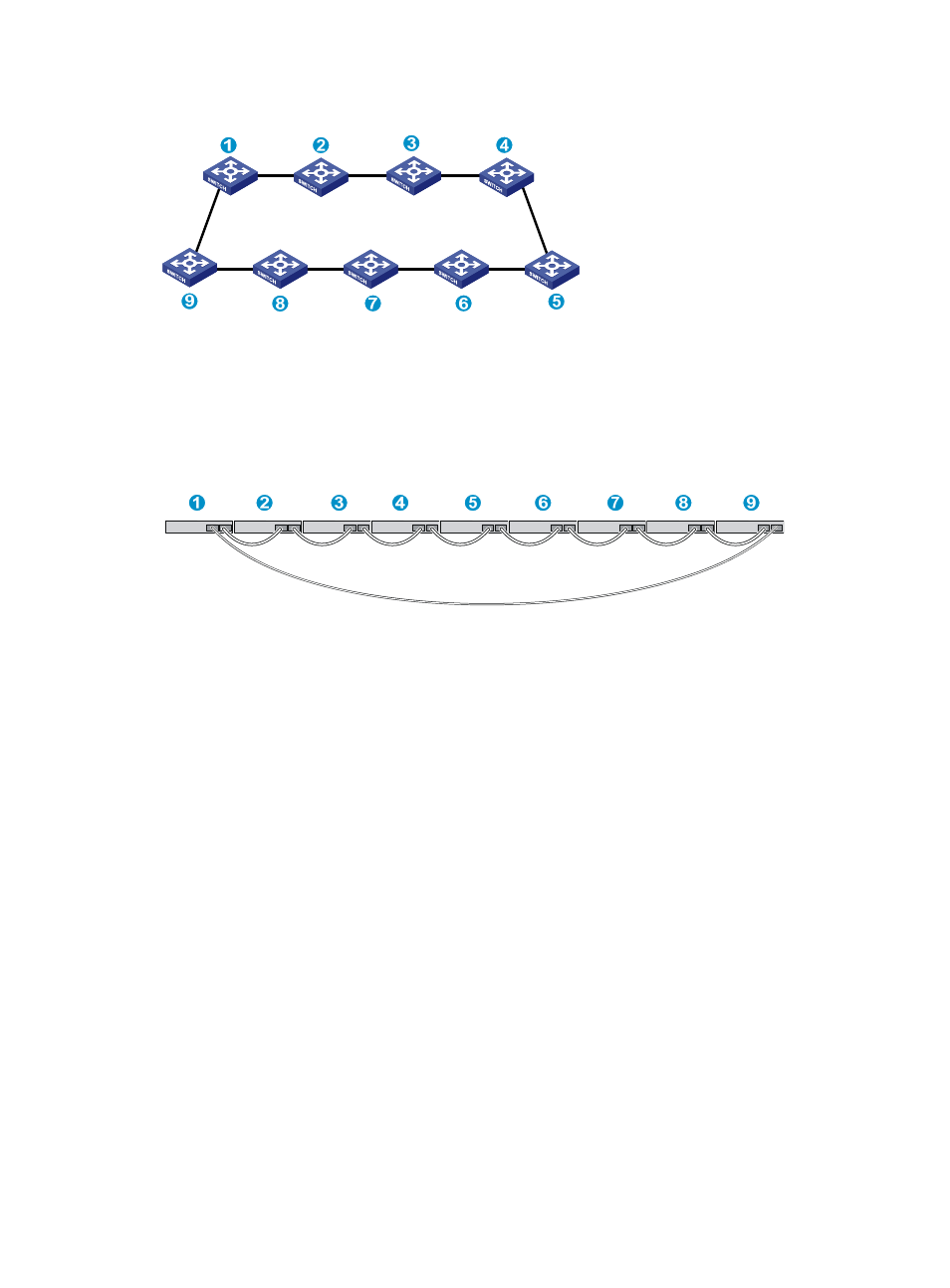Configuring basic irf settings, Connecting the physical irf ports, Powering on the switch – H3C Technologies H3C S5560 Series Switches User Manual
Page 56: Figure 56

47
Figure 56 IRF fabric topology
Connecting the IRF member switches in a ToR solution
You can install IRF member switches in different racks side by side to deploy a top of rack (ToR) solution.
shows an example for connecting 9 top of rack IRF member switches by using SFP+/QSFP+
transceiver modules and optical fibers. The topology is the same as
.
Figure 57 ToR cabling
Configuring basic IRF settings
After you install the IRF member switches, power on the switches, and log in to each IRF member switch
(see H3C S5560-EI Switch Series Fundamentals Configuration Guide) to configure their member IDs,
member priorities, and IRF port bindings.
Follow these guidelines when you configure the switches:
•
Assign the master switch higher member priority than any other switch.
•
Bind physical ports to IRF port 1 on one switch and to IRF port 2 on the other switch. You perform
IRF port binding before or after connecting IRF physical ports depending on the software release.
•
To bind the ports on an interface card to an IRF port, you must install the interface card first. For how
to install an interface card, see H3C S5560-EI Switch Series Interface Cards User Guide.
•
Execute the display irf configuration command to verify the basic IRF settings.
For more information about configuring basic IRF settings, see H3C S5560-EI Switch Series IRF
Configuration Guide.
Connecting the physical IRF ports
Use SFP+/QSFP+ DAC cables or SFP+/QSFP+ transceiver modules and fibers to connect the IRF
member switches as planned.
